What is the Measure of a Successful Patent
What passes for wisdom from a (modestly) successful “Patent Ace”
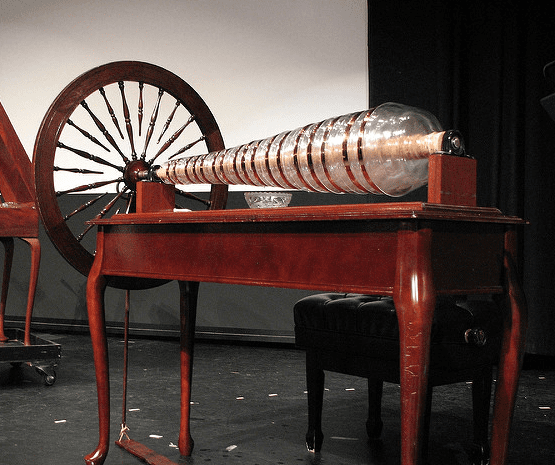
Figure 1: Ben Franklin’s “Glass Armonica,” an organ built with glass — creating the sounds like those from running your finger around the rim of a wine glass. Image: Franklin Institute
Statistically, filing a patent is the dumbest investment there is. Yet, 300,000 Americans file applications every year (around 0.1% of the population). An application can cost about $5,000 — and only if you do most of the work yourself. 89% of applications are rejected in the first instance. Eventually, about 50% are eventually accepted, after years of revisions and appeals¹ (Fig. 2). Of patents issued, only about 3% are put into production. And, of course, fewer than that break even on the investment. So, if you have a patented product for sale, you are in “the 1% of the 1%.” If your expectation is to retire on royalties, you are looking at it the wrong way.
I knew these odds 30 years ago, when I applied for my first patent. I read a dozen “How to” books and proceeded to ignore any advice that inconvenienced me. Of course, I wasted several years of the patent lifespan and learned everything the hard way. Nevertheless, I went on to file several more. Two of them paid off in the conventional sense. Two of them paid off big time for my employers. But I consider all of them successful.
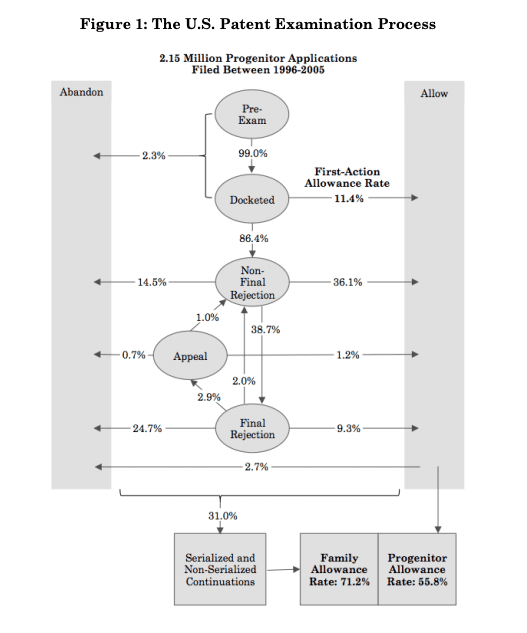
Figure 2: U.S. Patent Process
This is not another “How to” article. (Most of what you need to know can be found in the USPTO website².) I wish to convey Why you should get a patent. Besides the fun of the ‘trophy’ and any direct financial return, patents can have impact on your career and your business and can become a significant contribution to knowledge. In case I succeed in persuading you, I have added a few useful tips along the way.
Protection of Intellectual Property
The word patent comes from the Latin, patere, which means “to lay open.” It is a contract, wherein you agree to publish a complete, working design of your invention, in exchange for exclusive rights for a fixed period of time. It is hard to imagine how a new product or company could get started without patent protection.
The US founding fathers considered intellectual property so important they included a provision for it in the Constitution³. Several of the founding fathers were inventors, themselves. Ben Franklin’s famously invented bifocals, the Franklin stove, and the lightning rod. He also invented a catheter, swim fins, and — his personal favourite — the “Glass Armonica” (Fig. 1). Thomas Jefferson sponsored the enacting legislation. His inventions include an optimized plow, the dumbwaiter, a wheel cipher, the “Lazy Susan” (revolving cabinet), and the “polygraph” (Fig. 3). It is hardly surprising that the US Patent became the world gold standard. Patents in some countries are virtually worthless and unenforceable, but a US patent has real, material value and teeth.
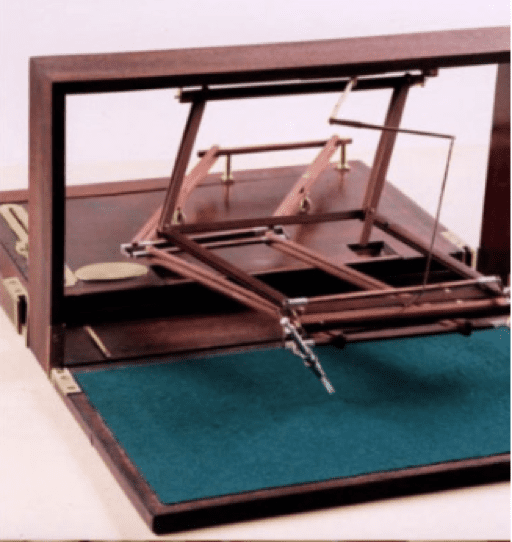
Figure 3: Thomas Jefferson’s polygraph (copy machine). Fun Facts: One inventor of the modern polygraph was William Moulton Marston, who also was the creator of Wonder Woman and her ‘Lasso of Truth’⁴. The Guilty Knowledge Test, developed for the polygraph remains the benchmark performance measure for the deception detection, including approaches using infrared, facial imaging, or fMRI brain imaging⁵.
The Trophy
The most tangible benefit is the Trophy — a patent to hang on the wall, add meat to your CV, and show your grandkids (Fig. 4). But the real thrill for most inventors is to see their invention being used. The ultimate validation comes on the day your patent expires, when several knock-offs come to market (see Appendix).
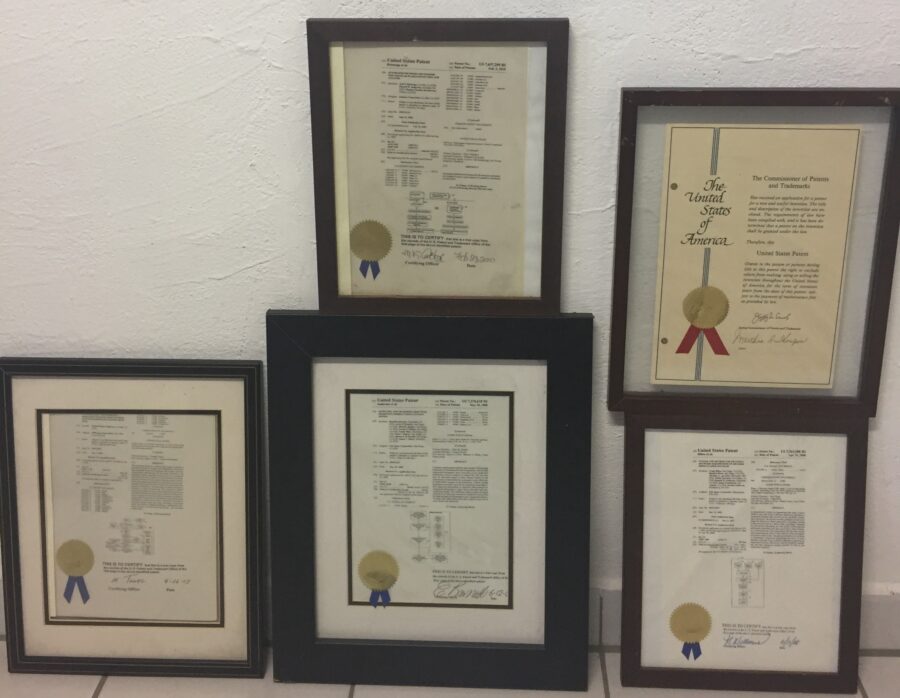
Figure 4: My trophies — All I need is a wall to hang them on
Personal Impact
When I received my first patent, I was resigned to the fact that it was destined for obscurity, existing only at the back of my CV and on the dusty shelves of the patent library in Menlo Park, CA. Recently out of vanity, I looked up my profile on Google Scholar and discovered that 4 of my patents had more citations than many of my academic publications (Fig. 5).
In academia, citations of your published research is sarcastically referred to as the “Dean’s Productivity Index.” Now, one can be cynical and say “approbation of your peers” is a low ambition, but citations are a rough measure of the impact you have had on others. And unlike academic publications, they are cited as ‘prior art’ mostly by other people who are building real things — related to or on top of the foundations you built.
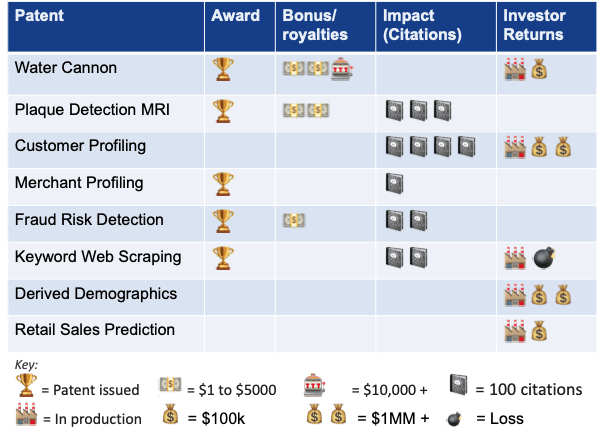
Figure 5: The author’s “patent scorecard.” Of 8 patents filed, 5 have been awarded (Refs 9–16). Five were commercially successful. One employer had a patent incentive/bonus plan. Two others resulted in royalties exceeding the costs. Finally, patent citations can be used as a rough measure of technical impact.
Going it Alone (doing everything the hard way)
The incentives for patents are clear for commercial enterprises, and intellectual capital is critical for start-ups. Large corporations are more ambivalent, though patenting IP is an important defensive strategy against competitors and patent trolls. But, unless you are willing to risk your own time and capital to enter into an industry full of experienced incumbents, the safer best is to license your idea.
If you chose this route, the best, single piece of advice I can give is to watch several episodes of The Dragon’s Den⁶. It can be painful to watch an inventor being eviscerated by a panel of investors. But, no matter how much you prepare, this will probably happen to you. A few takeaways:
1. Build a good-looking, functional prototype. If this is too expensive, get a professional rendering/drawing.
2. Estimate the total potential market for your product. It does not hurt to reverse sandbag; this gives them the opportunity to ‘correct’ your estimates… upwards.
3. Create cost estimates (visit a few manufacturers).
4. Give a realistic price estimate.
A reasonable royalty can range from 1–5% of gross sales. Note the larger the expected volume, the lower margin a manufacturer is likely to agree to. Two important clauses to put in your contract is a Guaranteed Minimum Annual Royalty (GMAR) and an “anti-shelving” clause — an expiration date, where your rights are restored if manufacturer does not put the product into production within 3 years⁷.
Patenting as an Employee
Many commercial enterprises prohibit publication of research results, but will support patent applications. Most will pay the legal fees, cutting your personal risk to zero. Unfortunately, few companies offer patent bonuses, cutting your reward also to zero. On the other hand, large companies allow you access to resources (e.g., legal, market research, product design) which would be hard to match on your own. They also have the means (existing product lines, distribution channels, sales forces, and investment capital) to bring a product to market, quickly and efficiently — making your odds of success substantially higher. Through the process, you also gain invaluable, first-hand experience with the full product development lifecycle.
Furthermore, the task of preparing a patent application has value in and of itself. The patent office does not require a physical, working prototype (except for perpetual motion machines). But you do need to describe a full, working design of at least one “embodiment” of your invention. Hence, writing a patent imposes the discipline and rigor of a design document. Anyone who has managed a technical effort has experienced the frustration of motivating their team to document their work — or worse, not understanding what they have built. The document is, in effect a design proposal. As such, it can be also be used to sell your idea to your organization and potential clients.
Lastly, consider all the activities an employer subjects you to: compliance training, open offices, chasing charge codes, independence audits, reorganizations, team building seminars, and so forth. Step back and reflect: you are being paid to invent stuff. How many people have that kind of job satisfaction? In what world view is that a bad thing? Looking back on over many years in consulting, the only enjoyable part of the job was creating and developing new ideas⁸.
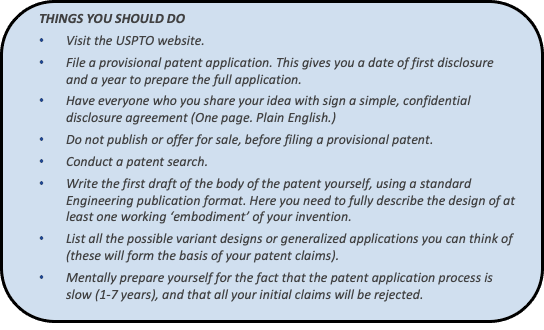
Conclusion
So, just do it! It’s fun. It’s personally and professionally rewarding. You will face rejection 95% of the time. Pushing new ideas is exhausting. You already know that most people instinctively resist change and lack imagination. These people look for reasons to say, “No.” Avoid these people. You know you are getting close when you begin to meet more and more interesting people.
Russell Anderson has 30 years’ experience developing data science solutions in the financial services, retail, e-commerce, and biomedical industries. He has served as Scientific Advisor at IBM, KPMG, Opera Solutions, NICE/Actimize, HCL, HNC Software, Mastercard Europe, JP Morgan Chase, and Halifax Bank of Scotland. He has a Ph.D. in Bioengineering from the University of California, has authored over 30 scientific publications, and holds several patents for commercial predictive solutions.
Questions/Comments are welcome: [email protected]
References
1. Michael Carley, Deepak Hegde, & Alan Marco (2015). What is the Probability of Receiving a U.S. Patent? Yale J. Law & Technology 17(1):203–223. https://digitalcommons.law.yale.edu/yjolt/vol17/iss1/5/
2. US Patent and Trademark Office Website https://www.uspto.gov/
3. US Constitution, Article I, Section 8. “The Congress shall have Power … To promote the Progress of Science and useful Arts, by securing for limited Times to Authors and Inventors the exclusive Right to their respective Writings and Discoveries.”
4. https://en.wikipedia.org/wiki/William_Moulton_Marston
5. Daniel Langleben (July 2005). Functional brain imaging for detecting and assessing deception and concealed recognition, and cognitive/emotional response to information. US Patent Application 2005/0154290
6. The name of the original, Japanese TV show was Money Tigers. Other franchises include Shark Tank (US), or Die Höhle der Löwen (Germany).
7. Goldstein Patent Law Firm Website. The Secret to obtaining a Licensing Agreement. https://goldsteinpatentlaw.com/the-secret-of-obtaining-a-licensing-…
8. Russell Anderson (Nov 2019). Would you Buy Insights from this Guy? Towards Data Science. https://medium.com/me/stats/post/1a3054574bda
9. Russell Anderson (1990). “Swimming Pool Water Cannon.” U.S. Patent №4,925,181 (Watersports LLC) https://www.streammachine.com/ecomm/product/84000-4-geyser-water-ca…
10.____ (2008). “Detecting & Measuring Risk with Predictive Models Using Content Mining.” U.S. Patent Nos. 7,376,618 & 8,032,448 (2011) (Fico).
11. _____ (2008). “System and Method for Obtaining Keyword Descriptions of Records from a Large Database” U.S. Patent №7,363,308 (Fico)
12. _____ (2010). “Automated Methods and Systems for Vascular Plaque Detection and Analysis.” U.S. Patent №7,657,299 & 8,068,894 (2011) Singapore and Eurasian patents #119754 (2007) (ISCHEM Corp).
13. _____ (2012). “Systems and Methods for Constructing and Utilizing a Merchant Database Derived from Customer Purchase Transaction Data” U.S. Patent №8,175,908 (JP Morgan)
14. _____ (2003). “Systems and Methods for Aggregating and Utilizing Retail Transaction Records at the Customer Level.” U.S. Continuation In Part (CIP) Patent Serial №09/988,291 and U.S. Patent Appl. 10/638,648 (IBM and JP Morgan Chase)
15. _____ (2003). “System and Method for Deriving Product Demographics from Transaction Data” U.S. Patent Appl. Serial №10/638,643 (JP Morgan Chase)
16. _____ (2005). “System and Method for Monitoring Gross Retail Sales” U.S. Provisional Patent Appl. 60/690,386 (JP Morgan Chase).
Appendix
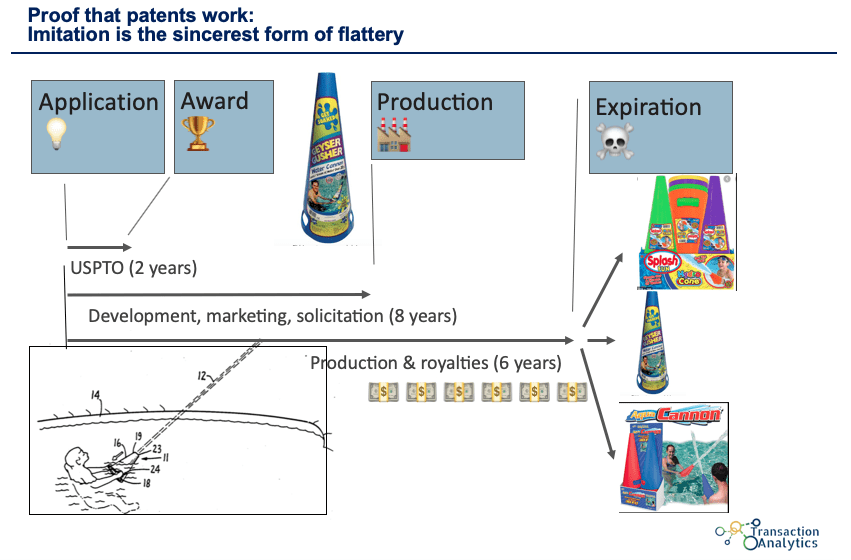
Appendix: Life cycle of the Swimming Pool Water Cannon. Knock-offs arrived on the market within 2 months of patent expiration date.
Originally posted here
